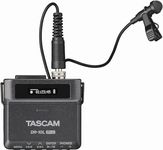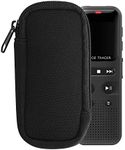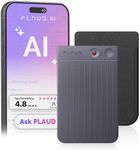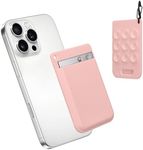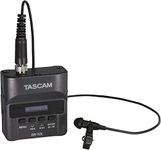Buying Guide for the Best Digital Voice Recorders
Choosing the right digital voice recorder can be a bit overwhelming given the variety of options available. However, understanding your specific needs and knowing what features to look for can make the process much easier. Whether you need a recorder for lectures, interviews, meetings, or personal notes, focusing on key specifications will help you find the best fit for your requirements.Recording QualityRecording quality refers to the clarity and detail of the audio captured by the recorder. This is important because higher quality recordings are easier to understand and transcribe. Recording quality is often measured in bit rates and sample rates. Higher bit rates and sample rates generally mean better quality. For general note-taking, a lower quality might suffice, but for professional use like interviews or music, higher quality is preferable.
Storage CapacityStorage capacity indicates how much audio the recorder can store. This is crucial because it determines how long you can record before needing to transfer or delete files. Storage is usually measured in gigabytes (GB). Smaller capacities (e.g., 2-4 GB) are suitable for occasional use, while larger capacities (e.g., 8-32 GB or more) are better for frequent or long recordings. Consider your recording habits and choose a capacity that ensures you won't run out of space unexpectedly.
Battery LifeBattery life is the duration the recorder can operate before needing a recharge or new batteries. This is important for uninterrupted recording sessions. Battery life can range from a few hours to several days. If you plan to use the recorder for long sessions or in situations where recharging isn't possible, opt for a model with longer battery life. For occasional use, shorter battery life might be sufficient.
Microphone QualityMicrophone quality affects how well the recorder captures sound, especially in noisy environments. High-quality microphones can pick up clear audio even from a distance or in a crowded room. Look for recorders with built-in noise reduction or multiple microphones for better sound capture. If you need to record in various environments, a high-quality microphone is essential. For quieter settings, a standard microphone might be adequate.
File FormatsFile formats determine how the audio is saved and can affect compatibility with other devices and software. Common formats include MP3, WAV, and AAC. MP3 files are smaller and widely compatible, making them good for general use. WAV files are larger but offer higher quality, suitable for professional use. Consider what devices and software you will use to play or edit the recordings and choose a recorder that supports the appropriate formats.
Ease of UseEase of use refers to how user-friendly the recorder is. This includes the layout of buttons, menu navigation, and overall design. A recorder that is easy to operate can save time and reduce frustration, especially in urgent situations. Look for models with intuitive controls and clear displays. If you are not tech-savvy, prioritize simplicity and ease of use to ensure a smooth experience.
ConnectivityConnectivity options, such as USB, Bluetooth, or Wi-Fi, determine how you can transfer recordings to other devices. This is important for quickly sharing or backing up files. USB is common and reliable for direct transfers, while Bluetooth and Wi-Fi offer wireless options. Consider how you plan to transfer and share your recordings and choose a recorder with the appropriate connectivity features.





